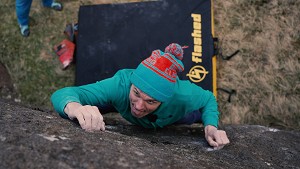
Question: A bouldering mat full of air? Really? No - REALLY?
Answer: Sort of.
The Ronin bouldering mat from Flashed is not like a bouncy castle, but it is full of air. More to the point, it is full of little foam cells, which are full of air. It sounded a bit weird, but I had heard great things. I borrowed one to test.
Ronin Airpads come unassembled, rolled up in a tube-like bag. Assembly takes around half an hour, and is actually a really good way to get to know exactly what is going on inside your new ankle protection system.
What's inside:
A fat layer of special air cells run right though the centre of the pad. These air cells are then covered on top and bottom with thin layers of foam - like a stiff sleeping mat.
The cells themselves are black squares, full of foam, and they 'self-inflate' a bit like a thermarest. When you land on the pad, the cells are compressed, forcing the air out. The air can't get out all that quickly (it's almost like the cells have a valve), so this takes the force out of the fall. Simple. The thin foam on top and bottom spreads the force out across the cells, meaning the harder you hit the pad, the more cells are 'activated'.
First impressions:
I got the pad out in my front room, and set about putting it together over several beers. The first thing that struck me was 'This is a chunky pad'. The second thing that struck me was 'This is pretty heavy'.
Walking around on the pad it feels really squishy. It feels like it is going to be too soft... 'Hmm', I wasn't convinced. I tried a flying leap off the sofa:
BBUUMMPPHHH!
Nothing. No crunch. No smash. It felt like a bouldering mat. No, it felt like a very, very good bouldering mat. Great, With the sofa test over I was suitably relieved and ready to take the pad outside.
Is it better than a normal pad:
The simple answer is - yes. Basically, I found this Ronin Air Pad to take more shock out of big falls. The air system is more effective than a standard foam system. You can hit it harder, fall further and come off less injured. My ankles liked it!
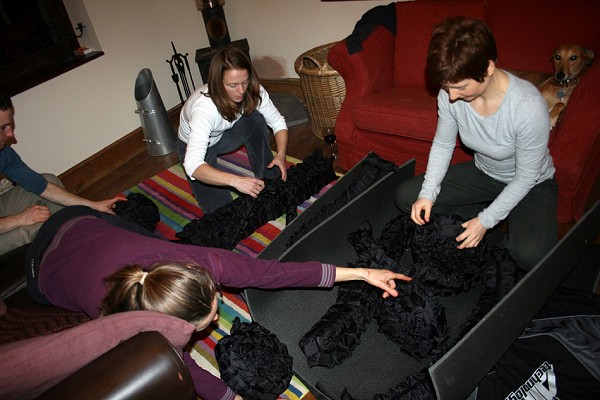
- Is it like landing in a bowl of feathers? Not quite. It's like a very good bouldering mat.
- Can you jump off high-rise buildings? No, definitely not, but you might be a little more confident on those highball problems.
Drawbacks:
Money... How much do you value your knees, ankles, and heels? The Ronin is not cheap. It retails at £295. That's a lot of money. I would say, if you are really in to bouldering, then this pad would be a worthwhile addition to your kitlist. If you are an all rounder, doing trad, sport and the odd day out on the boulders, it probably isn't for you.
But... The build quality of this pad is excellent. It is put together like a challenger tank. The air cells don't wear out as quickly as foam, and the cover material is super-tough. So if you are in it for the long game, the Ronin may well out-last a normal pad, meaning the initial price tag isn't so hard to justify.
Weight... I didn't find the weight of this pad an issue. I lugged it up hill and dale and lobbed off on to it at every available opportunity. My partner is a small woman. She struggled to hump it around. Be aware that the Ronin weighs a fair bit more than an average pad.
What the guys at Flashed say:
"It's still a pad; you fold it up, put in the car, get it out, carry it to the crag, open it out and fall on it. No pumps, inflation stuff or anything.
It has the usual closed cell foam as the outer sandwich, but doesn't have softer foam on the inside... it has a hundred or so AIR cells in it. Each about the size of a fag pack that are all fixed in strips...
It's the cells that make it special. They have a small central foam core enveloped by a semi permeable membrane to allow for a big cushion of air to be expelled as you slam onto the pad. The air acts as the shock absorber.
On walking over the pad it feels squishy... each small surface area of your footprint deflates some cells, that spontaneously re-inflate some 2 - 3 seconds later as your foot leaves the area.
The pad feels really plush, but at this stage doesn't reveal it's true performance.
However, take a fall onto it and progressively more cells are deployed as the closed cell foam spreads the shock load over the surface of the pad. The pad comes back to shape in 2 seconds as above.
So, the shock absorbing ability of the pad is not linear and more of the pad in effect gets used to cushion your fall with progressive deflation of the cells. That's why it's much better at coping with greater and greater impacts.
Nothing is perfect, but this shock absorption system is way better than foam can ever be.
In addition the cushioning effect it's very reassuring to cash onto from on high, jarring is kept to a minimum."
Conclusion:
Better than foam - definitely. It gave me more confidence on high problems (Remember... you still have to land on the pad though!). Heavy and expensive, but will last forever. Has a funky new technology.
Buy this pad if:
- You value your ankles over £295
- You are big in to bouldering
- You can carry a heavy pad
- Price: £295
- Weight: 7.6kg
- Size: 38" x 50" x 5" thick (basically this = big).
More info at: http://roninuk.blogspot.com/
Available from The Climbing Works, Sheffield




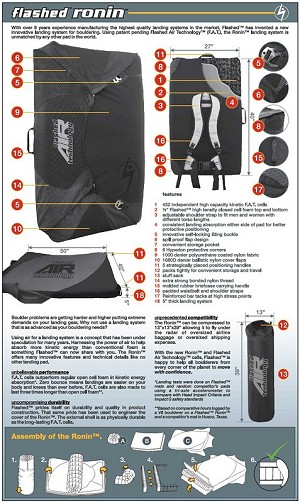
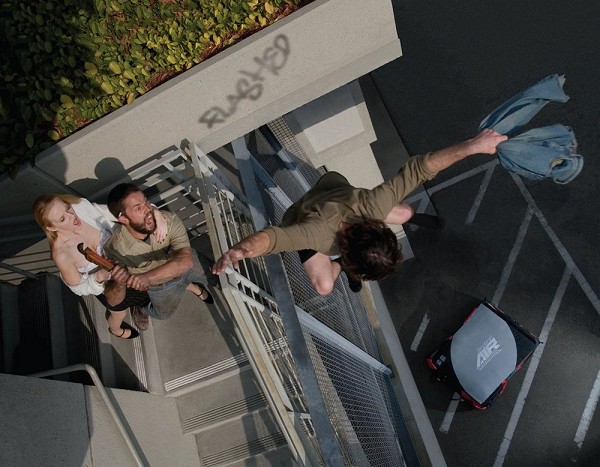

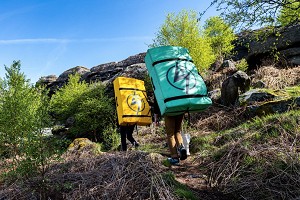




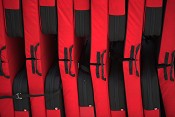
Comments